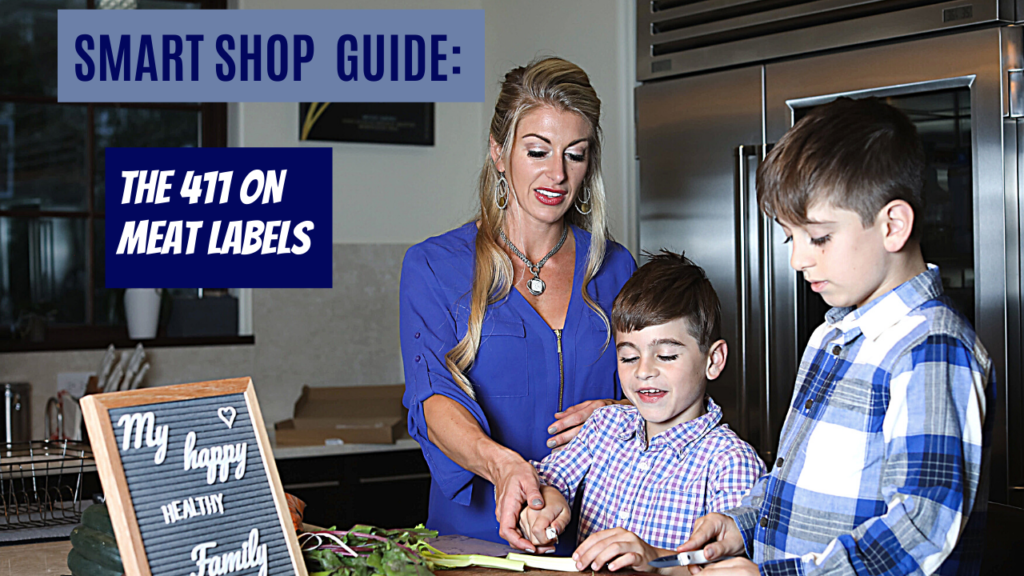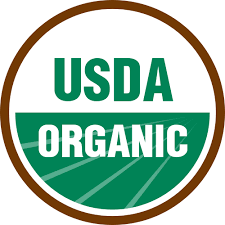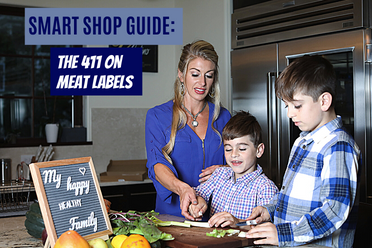
Smart Shop Guide: Decoding Labels for Meats
In this blog, I’m excited (and disgusted) to shed some light on what I’ve learned about our food industry meat. You may be misguided by packaging and labels. I want to shed some light on this topic and increase your ‘shopping smarts’!
Prior to having children, it had been many moons since I had eaten or purchased deli meat. I was shopping one day for my boy’s school lunch. I had been purchasing an all natural, no nitrates added brand that was kinda hard to find at the time.
As I was standing in checkout paying almost a dollar per slice, I wondered if what I was purchasing was in fact ‘legit’. This fueled my momma research brain into action.
We all deserve to know what food labels mean without confusion, deciphering vague claims or being duked by marketing schemes. Understanding the difference and value of food produced by clean sustainable farmers versus large agricultural corporations greenwash their product packaging is important to most people. Accurately understanding labels is your right as a consumer.
When your shopping, what labels do you look for?
Here my friend is what I’ve found.
Food companies are able to put labels on products that are misleading and lie to consumers. Yes, sadly this is legal.
Here are common labels that you may see and what they actually mean.
HELPFUL LABELS
Certified Organic:

Looking for the USDA Organic seal is probably one of the most valuable labels to look for when shopping.
To carry the USDA Organic label you must meet these certain standards:
- Animals must be fed only organically grown feed (without animal byproducts) and can’t be given antibiotics or synthetic hormones.
- Animals must have access to the outdoors, and all hoofed animals including cows must have pasture access.
- Animals can’t be cloned(5)
USDA Inspected:
A USDA inspection seal on your food means that your food has met certain quality standards, such as environments the animal lives in being humane, health of the animal prior to being slaughtered, meat selected to be packaged being of food grade quality, the packaging being sanitary etc.
This seal means your food has passed these quality standards and has been quality ranked/graded and certified by USDA employees or company employees under USDA supervision. The grading has to do with quality and size, not productions methods or company’s practices (5)
Treated with Irradiation:
 Finding this label on your food mean that it has been exposed and treated to ionizing radiation. This treatment is used to improve food safety by reducing the risk of foodborne illness, extending product shelf life by destroying organisms responsible for spoiling the food. This process is right now believed to be generally safe for the consumer.
Finding this label on your food mean that it has been exposed and treated to ionizing radiation. This treatment is used to improve food safety by reducing the risk of foodborne illness, extending product shelf life by destroying organisms responsible for spoiling the food. This process is right now believed to be generally safe for the consumer.
MISLEADING LABELS
“100% Natural”: Companies are able to call their meats 100% Natural as long as no artificial ingredients were added and the meat itself is minimally processed. Natural means basically nothing. This applies to all meats not just deli meats. Animals are still raised with chemically induced growth factors, they’re given antibiotics, they’re fed GMO grains, and ractopamine.
No Nitrates Added: I must admit; I fell for this one for way too many YEARS more than I care to admit. Clearly from seeing the label ‘no nitrates added’ we are left to assume that they pose a negative effect on the body, and that choosing the ‘no nitrates added’ is a better choice?
Why do we need nitrates on meats? And what are nitrates? Sodium nitrate is added to deli meats to fight harmful bacteria, mainly botulism. Nitrates in large doses can be poisonous but apparently only in large doses. With efforts to prevent foodborne illnesses like botulism, the USDA enforces 200 parts of sodium nitrate, per million parts of meat. (2)
It gives deli meats its slightly pink color. Under certain conditions in the human body, nitrates can cause cellular damage and turn to cancer-causing molecules called nitrosamines.
However, there is synthetic sodium nitrate that you will find in most deli meats and then there is natural sodium nitrate. The natural form of sodium nitrate used is cultured celery powder and cherry powder which are both high in nitrates. The question remains, is this a safer option? Can natural nitrates still convert in the body and create cancerous nitrosamines? There isn’t enough evidence to make strong claims yet. (3)
Nitrates are naturally occurring in vegetables and it’s the highly acidic environment of our stomachs that convert nitrates to nitrosamines. Nitrosamines are a carcinogen, however, Vitamin C (found in the vegetables that nitrites occur in) prevents the conversion to nitrosamines. (4)
Whether cherry, celery, or sodium nitrates are used, this will be listed under the ingredients on the packaging.
CURED VS. UNCURED:
Again, I feel like this packaging is misleading. All package meats according to the Food Safety and Inspection Service (FSIS) are preserved. Cured is preserved with sodium nitrites and uncured is also preserved with sodium nitrites usually in the form of celery and sea salt. (4)
NO HORMONES ADDED: Oh my ya’ll. Marketing scam 101. According to the USDA guidelines (1) hormones are not allowed in raising hogs or poultry. These words can only be used on the packaging if its followed by federal regulations prohibit the use of hormones. Hormones are allowed in beef, therefore, this is a label that you will see less on deli roast beef. Again, this is 100% marketing, knowing that the average consumer will see this branding as superior in product value.
Remember that as a consumer you have power by voting with your dollar. Choosing better options drives supply and demand and pushes the change.
Have questions? Drop them below…
Like this content, please share!
Resources:
- https://www.fsis.usda.gov/wps/portal/fsis/topics/food-safety-education/get-answers/food-safety-fact-sheets/food-labeling/meat-and-poultry-labeling-terms/meat-and-poultry-labeling-terms/!ut/p/a1/jZFRb4IwEMc_DY-lx3AG90ZIFmUTZsxm5WUpehSS0pK2jrhPP9wyExed9p569_vn7v5HC8poofhHI7hrtOLy8C_G77CAcTBJIM0nwSPMsrdF_pQkEC3vB2D9D5CFN-ovvBiu6dMbGtyZeTIXtOi4q0mjKk2ZQEe4sj0aS1ml9ZZYXqHbk4pvHLE1ovstSF6ibJSgrEV-UG1Jp3fSmf2xRBya1l4HVrQ4HReCIWZZuBxN0yyEfPQXOOPnD3DZsMERIXX5fbx1rMowGlY3WKFB4-_MkK6d6-yDBx70fe8LrYVEf6NbD85Jam0dZack7dpX9vkcT6F5aVeRjb8Ay-NlYw!!/#15
- https://www.livescience.com/36057-truth-nitrites-lunch-meat-preservatives.html
- https://www.mcgill.ca/oss/article/food/celery-juice-viable-alternative-nitrites-cured-meats
- https://www.healthline.com/health/cured-vs-uncured-bacon#cured-vs-uncured
- https://www.foodandwaterwatch.org

